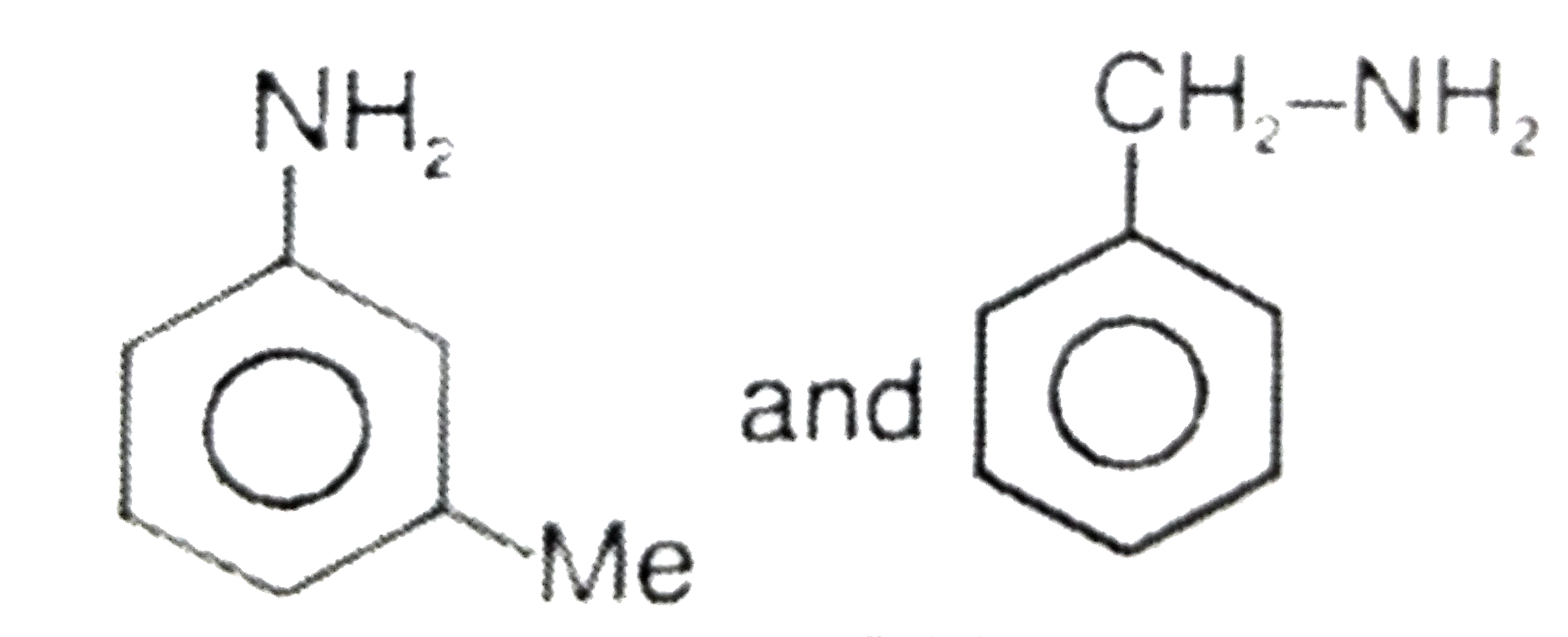Methanol and ethanol can be distinguished by
Lucas test
Iodoform test
Victor Meyer's test
All of these
The correct Answer is:B
To distinguish between methanol and ethanol, we can follow these steps:
Step 1: Understand the Structure of Methanol and Ethanol
- Methanol (CH3OH): It is a primary alcohol with one carbon atom.
- Ethanol (CH3CH2OH): It is also a primary alcohol but has two carbon atoms.
Step 2: Identify the Tests Available
The tests mentioned for distinguishing between alcohols are:
1. Lucas Test
2. Iodoform Test
3. Victor-Meyer Test
Step 3: Analyze the Lucas Test
- The Lucas Test is used to differentiate between primary, secondary, and tertiary alcohols.
- Since both methanol and ethanol are primary alcohols, they will not show a significant difference in this test.
- Conclusion: Lucas Test cannot be used to distinguish methanol from ethanol.
Step 4: Analyze the Iodoform Test
- The Iodoform Test is specifically used to identify methyl ketones or alcohols that can be oxidized to methyl ketones.
- Ethanol reacts with iodine in the presence of sodium hydroxide to produce a yellow precipitate of iodoform (CHI3).
- Methanol does not react in this way and does not produce a precipitate.
- Conclusion: Iodoform Test can distinguish between methanol and ethanol.
Step 5: Analyze the Victor-Meyer Test
- The Victor-Meyer Test is used to differentiate between primary, secondary, and tertiary alcohols based on the color change observed.
- However, it does not specifically distinguish between methanol and ethanol, as both are primary alcohols.
- Conclusion: Victor-Meyer Test cannot be used to distinguish methanol from ethanol.
Final Conclusion
Based on the analysis of the tests:
- Correct Answer: Methanol and ethanol can be distinguished by the Iodoform Test.
- Methanol (CH3OH): It is a primary alcohol with one carbon atom.
- Ethanol (CH3CH2OH): It is also a primary alcohol but has two carbon atoms.
The tests mentioned for distinguishing between alcohols are:
1. Lucas Test
2. Iodoform Test
3. Victor-Meyer Test
- The Lucas Test is used to differentiate between primary, secondary, and tertiary alcohols.
- Since both methanol and ethanol are primary alcohols, they will not show a significant difference in this test.
- Conclusion: Lucas Test cannot be used to distinguish methanol from ethanol.
- The Iodoform Test is specifically used to identify methyl ketones or alcohols that can be oxidized to methyl ketones.
- Ethanol reacts with iodine in the presence of sodium hydroxide to produce a yellow precipitate of iodoform (CHI3).
- Methanol does not react in this way and does not produce a precipitate.
- Conclusion: Iodoform Test can distinguish between methanol and ethanol.
- The Victor-Meyer Test is used to differentiate between primary, secondary, and tertiary alcohols based on the color change observed.
- However, it does not specifically distinguish between methanol and ethanol, as both are primary alcohols.
- Conclusion: Victor-Meyer Test cannot be used to distinguish methanol from ethanol.
Based on the analysis of the tests:
- Correct Answer: Methanol and ethanol can be distinguished by the Iodoform Test.
Topper's Solved these Questions
- BOOK - AAKASH INSTITUTE ENGLISHCHAPTER - ALCOHOLS, PHENOLS AND ETHERSEXERCISE - Assignment Section - A (Objective type questions)45videos
ALCOHOLS, PHENOLS AND ETHERS
- BOOK - AAKASH INSTITUTE ENGLISHCHAPTER - ALCOHOLS, PHENOLS AND ETHERSEXERCISE - Assignment Section - B (Objective type questions)25videos
ALCOHOLS, PHENOLS AND ETHERS
- BOOK - AAKASH INSTITUTE ENGLISHCHAPTER - ALCOHOLS, PHENOLS AND ETHERSEXERCISE - Try yourself5videos
ALCOHOLS, PHENOLS AND ETHERS
- BOOK - AAKASH INSTITUTE ENGLISHCHAPTER - ALCOHOLS, PHENOLS AND ETHERS EXERCISE - Try Yourself5videos
ALCOHOLS, PHENOLS AND ETHERS
Similar Questions
Knowledge Check
- Question 1 - Select One
Phenol and cyclohexanol can be distinguished by using :
AFeCl3BNaCPCl3DCH3COCl - Question 2 - Select One
Phenol and benzoic acid can be distinguished by :
Aaqueous NaHCO3Baqueous NaNO3Caqueous NaOHDconc. H2SO4 - Question 3 - Select One
1-propanol and 2-propanol can be best distinguished by :
Aoxidation with alkaline KMnO4 followed by reaction with Fehling's solutionBoxidation with acidic dichromate followed by reaction with Fehling's solutionCoxidation by heating with copper followed by reaction with Fehling's solutionDoxidation with conc. H2SO4 followed by reaction with Fehling's solution
Propanal and Acetone can be distinguished by testing with
View SolutionAcetaldehyde and acetylene can be distinguished by :
View SolutionGlucose and fructose can be distinguished by
View SolutionPropyne and propene can be distinguished by :
View SolutionPhenol and carboxylic acid can be distinguished by
View Solution


 can be distinguish by
can be distinguish by